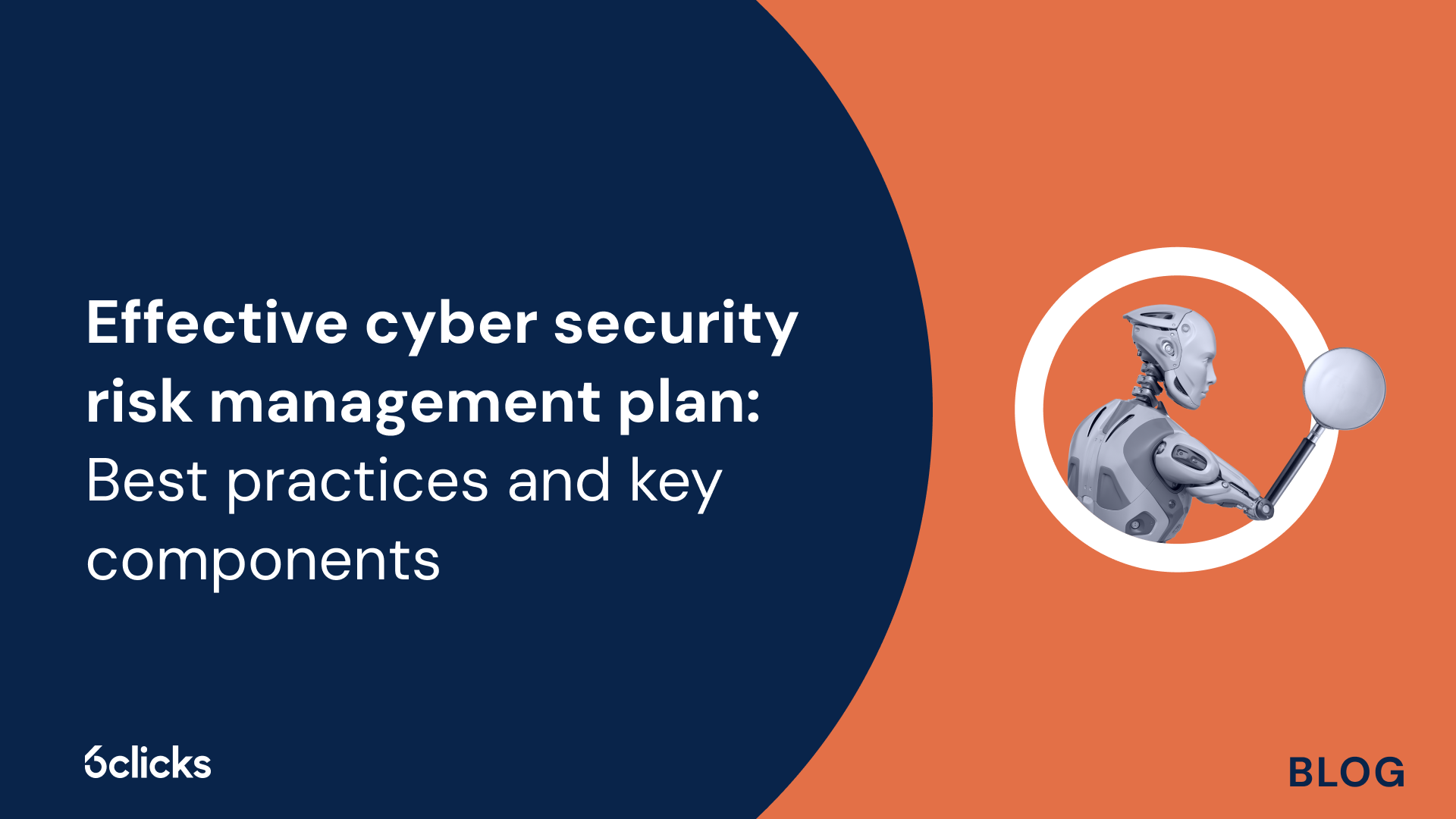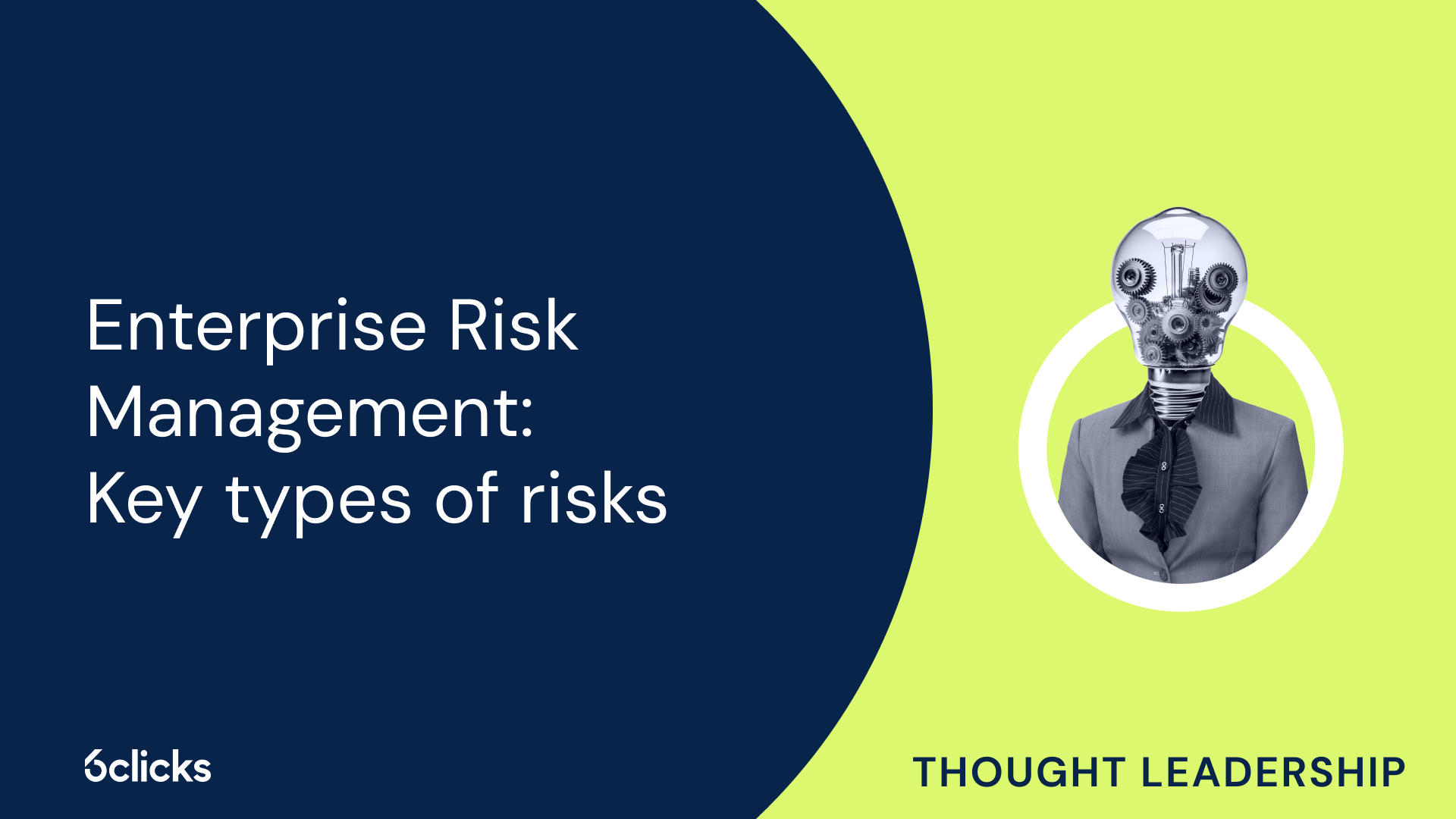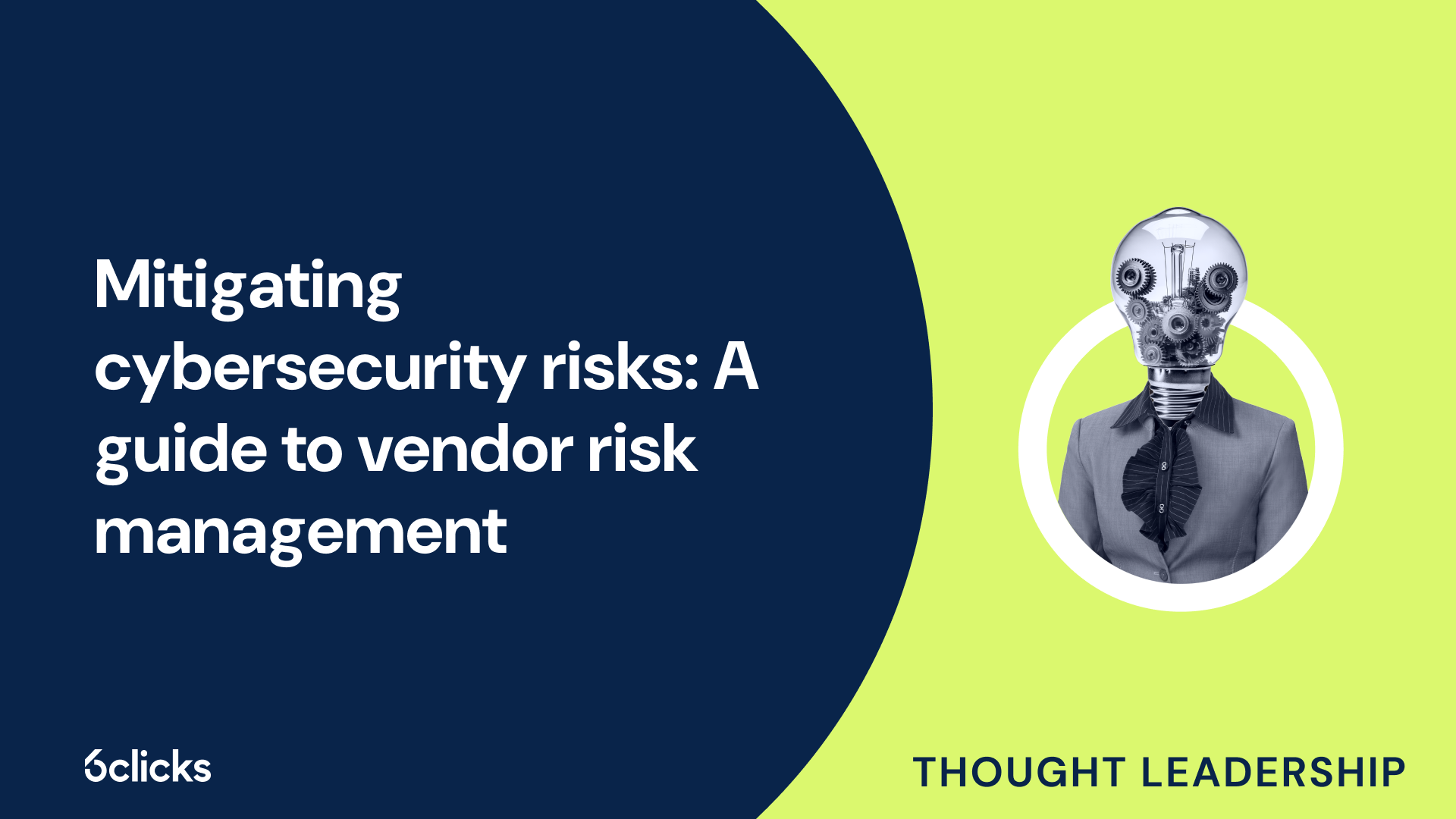The GRC buyer’s guide for 2025: Building resilience with AI-powered, federated solutions
-1.png?width=200&height=249&name=Group%20193%20(1)-1.png)
The GRC buyer’s guide for 2025: Building resilience with AI-powered, federated solutions
Overview of NIST CSF
The National Institute of Standards and Technology (NIST) Cybersecurity Framework (CSF) is a widely adopted framework that provides organizations with a structure to manage and reduce cybersecurity risks. The framework consists of a set of standards, guidelines, and best practices that organizations can customize to suit their specific needs. It is designed to help organizations create, implement, and improve their cybersecurity programs by providing a comprehensive approach to identifying, protecting, detecting, responding to, and recovering from cybersecurity events. The NIST CSF is focused on promoting cybersecurity resilience by emphasizing risk management and continuous monitoring. It provides a common language and a structured framework for organizations to assess their cybersecurity posture, identify gaps, and prioritize their cybersecurity activities. By adhering to the NIST CSF, organizations can enhance their understanding of the potential impact of cybersecurity risks, enhance their cybersecurity practices, and align their cybersecurity efforts with their business objectives.
Purpose of NIST CSF
The purpose of the NIST CSF (National Institute of Standards and Technology Cybersecurity Framework) is to provide organizations with a comprehensive approach to managing and mitigating cybersecurity risks. By following the framework's guidelines, organizations can establish a solid foundation for robust cybersecurity programs.
The NIST CSF sets industry-recognized best practices that assist organizations in identifying and addressing security weaknesses. It provides a common language and framework for organizations to assess and manage their cybersecurity risks. The framework encompasses five core functions: Identify, Protect, Detect, Respond, and Recover.
Through the Identify function, organizations gain a clear understanding of their cybersecurity risks and establish their risk tolerance levels. The Protect function focuses on implementing safeguards and protective measures to prevent, detect, and mitigate cyber threats. The Detect function involves actively monitoring systems to identify potential incidents and security breaches. In the event of an incident, the Respond function outlines actions to be taken to minimize the impact and restore normal operations. The Recover function focuses on re-establishing critical functions and continuously improving response and recovery activities.
By adhering to the NIST CSF, organizations can enhance their cybersecurity posture and develop a proactive approach to managing and mitigating cybersecurity risks. It helps organizations align cybersecurity efforts with business objectives, comply with regulatory requirements, and improve their overall cybersecurity practices. Implementing the NIST CSF provides organizations with a systematic and effective approach to cyber risk management, ultimately ensuring the resilience of their systems and protecting against cyber threats.
How Many Controls are in the NIST Cybersecurity Framework?
The NIST Cybersecurity Framework (CSF) is a comprehensive tool that provides guidelines and best practices for organizations to assess and manage their cybersecurity risks. It consists of five core functions - Identify, Protect, Detect, Respond, and Recover - which help organizations establish a strong cybersecurity program. In this article, we will focus on the number of controls included in the NIST CSF and how these controls contribute to the overall security posture of an organization. Understanding the number and nature of these controls is crucial for organizations looking to enhance their cybersecurity practices and ensure the protection of their critical assets.
Core Functions and Categories
The National Institute of Standards and Technology (NIST) Cybersecurity Framework (CSF) provides organizations with a structured approach to managing and expressing their management of cybersecurity risk. At the core of the framework are five functions that act as the backbone, helping organizations to organize and prioritize their cybersecurity efforts.
These core functions are Identify, Protect, Detect, Respond, and Recover. Each function represents a key aspect of managing cybersecurity risk within an organization, and together, they form a comprehensive approach to cybersecurity risk management.
Within each core function, there are multiple categories that cover various business outcomes across physical environments, cyber environments, and personnel. These categories are designed to provide organizations with a holistic view of their cybersecurity risk and help them identify and prioritize relevant controls.
The 23 categories within the NIST CSF include Asset Management, Business Environment, Governance, Risk Assessment, Risk Management Strategy, Access Control, Awareness and Training, Data Security, Information Protection Processes and Procedures, Maintenance, Protective Technology, Anomalies and Events, Security Continuous Monitoring, Detection Processes, Response Planning, Communications, Analysis, Mitigation, Improvements, Recovery Planning, Communications, and Organizational Recovery.
By addressing these categories, organizations can effectively manage their cybersecurity risks and develop a comprehensive cybersecurity program that aligns with their business objectives. The NIST CSF provides a flexible framework that can be adapted to various industries and organizational sizes, making it an invaluable resource in today's rapidly evolving cybersecurity landscape.
Identifying and Protecting Assets
Identifying and protecting assets is a crucial aspect of cybersecurity risk management within the NIST CSF framework. By understanding and categorizing their assets, organizations can effectively prioritize their security efforts and implement appropriate controls to mitigate risks.
The first step in this process is to identify and inventory all assets, both physical and virtual, that are critical to the organization's business operations. This includes hardware, software, data, and personnel. By conducting a comprehensive assessment, organizations can gain a clear understanding of what needs to be protected.
Once identified, organizations must then take measures to limit access to these assets. This involves implementing strong access controls, both physical and virtual, to ensure that only authorized individuals have the necessary permissions to access and interact with these assets. This may include measures such as two-factor authentication, access logs, and access restrictions based on job roles.
Managing information and records securely is also critical to asset protection. Organizations must develop and implement secure practices for storing, transmitting, and disposing of sensitive information. This may involve encryption, firewalls, secure data transfer protocols, and secure document destruction processes.
In addition, organizations must establish and maintain security policies and procedures to guide their employees' behavior and actions regarding asset protection. This includes clearly defining roles and responsibilities, establishing incident response protocols, and regularly training employees on cybersecurity best practices.
Regular maintenance and repairs of IT and industrial control systems are also key considerations in asset protection. By ensuring that all systems are up-to-date with the latest security patches and updates, organizations can minimize vulnerabilities and reduce the risk of unauthorized access.
Lastly, protective technologies play a crucial role in ensuring the security and resilience of systems. This includes implementing technologies such as intrusion detection systems, firewalls, antivirus software, and encryption mechanisms. These technologies help to prevent, detect, and respond to cyber threats, enhancing the overall security posture of the organization.
By effectively identifying and protecting assets, organizations can significantly reduce their cybersecurity risks and enhance their ability to detect, respond to, and recover from potential incidents.
Detecting Security Incidents
Detecting security incidents is a crucial step in the NIST CSF process as it plays a pivotal role in identifying potential cyber threats and minimizing the impact of cybersecurity events. By actively monitoring and analyzing network traffic, organizations can identify and respond to security incidents in a timely fashion, preventing further exploitation and damage.
Detecting security incidents involves the use of various cybersecurity practices and technologies to continuously monitor the organization's systems and networks. This includes implementing intrusion detection systems, log analysis tools, and security information and event management systems.
The primary goal of detecting security incidents is to identify any unauthorized or suspicious activities that may indicate a cyber threat. This could be anomalous network traffic, unexpected system behavior, or unauthorized access attempts. By promptly detecting these incidents, organizations can quickly assess and respond to the potential risks, ensuring that the impact is minimized and any potential damage is mitigated.
Furthermore, detecting security incidents provides valuable insights into the overall cybersecurity posture of the organization. It helps identify vulnerabilities and weaknesses in the systems, allowing organizations to take proactive measures to enhance their security controls and protect critical assets.
Responding to Security Incidents
Responding to security incidents is a critical aspect of cybersecurity management. It involves a well-defined incident response process that enables organizations to effectively detect, contain, and mitigate the impact of security incidents. The key steps and controls involved in responding to security incidents are outlined below.
The purpose of the Responding to Security Incidents section of the NIST Cybersecurity Framework is to provide guidance on establishing an incident response program that ensures timely and effective response to cyber incidents. This includes the development of an incident response plan, implementation of incident response controls, and coordination with external stakeholders.
The incident response process typically involves several key steps. Firstly, organizations need to establish an incident response team consisting of individuals with the necessary expertise and authority to respond to incidents. This team is responsible for developing and executing the incident response plan.
Next, when a security incident is identified, the incident response team quickly detects and confirms the incident. This is followed by containing the incident, which involves isolating affected systems or networks to prevent further damage. Once contained, the team proceeds with investigating the incident to determine its cause and extent.
Based on the findings from the investigation, organizations then take appropriate actions to eradicate the incident and restore normal operations. This may include patching vulnerabilities, removing malware, or resetting compromised accounts. Throughout the entire process, incident response controls, such as incident logging and documentation, play a crucial role in ensuring proper tracking and reporting of incidents.
Recovering from Security Incidents
Recovering from security incidents is a critical component of any effective cybersecurity program. The NIST Cybersecurity Framework emphasizes the need for organizations to develop and implement recovery planning processes to ensure timely restoration of systems and services in the event of a cyber incident.
Recovery planning involves creating a comprehensive strategy that outlines the necessary steps to recover from cybersecurity incidents. This includes identifying critical functions and services, establishing recovery objectives, and developing recovery procedures and processes. Organizations should also incorporate lessons learned from previous incidents and continuously improve their recovery plans based on new threats and vulnerabilities.
Effective communication is vital during the recovery phase. Organizations should have clear lines of communication with internal stakeholders, such as IT teams and management, to facilitate timely restoration efforts. External communications with customers, regulators, and other relevant parties should also be considered to manage the impact of the incident and restore trust.
Timely restoration is a key goal during the recovery process. Organizations should prioritize systems and services based on their criticality and implement recovery activities accordingly. This may involve restoring backups, replacing compromised hardware or software, and implementing additional protective measures to prevent future incidents.
By executing and maintaining recovery processes, incorporating lessons learned, and coordinating restoration activities with internal and external stakeholders, organizations can effectively recover from cybersecurity incidents and mitigate potential impact on their business operations.
Benefits of Adopting NIST CSF
The National Institute of Standards and Technology (NIST) Cybersecurity Framework (CSF) provides organizations with a structured approach to managing and mitigating cybersecurity risks. By adopting the NIST CSF, organizations can greatly enhance their cybersecurity programs and improve their overall security posture.
One of the key benefits of adopting the NIST CSF is its comprehensive nature. The framework covers a wide range of cybersecurity activities, including risk assessments, protective measures, and recovery planning. This ensures that organizations have a holistic approach to addressing cybersecurity risks and can be better prepared for potential cyber threats.
Furthermore, the voluntary nature of the NIST CSF provides organizations with flexibility in implementation and adoption. While the framework is highly recommended, organizations have the flexibility to tailor it to their specific needs and requirements. This means that organizations can prioritize their cybersecurity efforts based on their unique business objectives and risk tolerances.
Another advantage of becoming compliant with NIST CSF standards is the improved security posture it offers. Implementing the controls outlined in the framework can help organizations identify and address vulnerabilities in their systems and networks. This can significantly reduce the potential impact of cybersecurity incidents and enhance the resilience of systems.
Additionally, adopting the NIST CSF can help organizations meet other regulatory and compliance standards. Many industry-specific regulations and frameworks reference the NIST CSF as a recognized cybersecurity framework. By aligning with the NIST CSF, organizations can ensure they are meeting the necessary requirements and demonstrate their commitment to cybersecurity to external stakeholders.
Potential Challenges when Implementing NIST CSF
Implementing the NIST CSF can come with its own set of challenges for organizations. These challenges can range from resource constraints and resistance to change to the complexity of implementation. However, with the right strategies and best practices, these challenges can be effectively addressed and mitigated.
One potential challenge organizations may face is resource constraints. Implementing the NIST CSF requires allocation of adequate resources, such as funding, staff, and technology. Smaller organizations or those with limited budgets may struggle to allocate these resources, which can impact the successful implementation of the framework. To address this challenge, organizations can prioritize their cybersecurity efforts based on their risk appetite and focus on implementing controls that provide the most value. This can help optimize resource allocation and ensure that critical cybersecurity areas are adequately addressed.
Resistance to change is another challenge that organizations may encounter. Implementing the NIST CSF may require changes to existing processes, procedures, and technologies, which can be met with resistance from employees and stakeholders. To overcome this challenge, it is essential to engage stakeholders early in the process and communicate the benefits of adopting the framework. Providing adequate training and education on the framework can also help employees understand its importance and facilitate smoother adoption.
The complexity of implementation is also a common challenge faced by organizations. The NIST CSF is a comprehensive framework that covers various cybersecurity areas, which can make implementation complex and overwhelming. To address this challenge, organizations can take a phased implementation approach, focusing on one area or control at a time. This allows for a more manageable and systematic implementation process, ensuring that each control is properly implemented and tested before moving on to the next.






